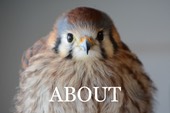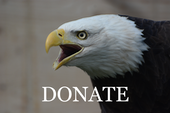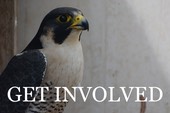Common Poorwill

We started the week with the admission of a Common Poorwill, the smallest member of the Nightjar Family and an infrequent visitor to BMW. The bird had spent the weekend trapped in a warehouse. After a couple of days of fluids and lots of meal worms, we sent him on his way south.
According to the Cornell Lab of Ornithology All About Birds website, the Common Pooorwill is one of the few birds who can go into a hibernation-like state known as torpor. In periods of cold weather, they may stay in torpor for several weeks, allowing them to go without food during cold spells when insect prey would not be active.
Two More Nightjars
Two Common Nighthawks were also admitted this past week. They are larger cousins of the Poorwill. One had compound wing fractures that could not be repaired and was euthanized. The other was very thin. Its appearance suggested that the reason it could not fly was damage to the left shoulder. A radiograph suggested that the injuries were in the right shoulder and elbow. Nighthawks are notorious for not self-feeding in captivity. Perhaps it is due to its underweight condition, but this Nighthawk readily accepts meal worms from forceps.


Great Horned Owl taken to Animal Clinic East
Animal Clinic East in Walla Walla is a generous supporter of Blue Mountain Wildlife. They admitted a Great Horned Owl this past week. The owl had no obvious injuries, but was unable to normally use his left foot. After a few days of supportive care at BMW he is eating mice and using his foot. We still don’t know why the muscles on the left side of his body appear to be smaller than those on the right side.


The owl had clumps of mud in his feathers when he first arrived. The mud shows up in the radiograph as white material. https://youtu.be/3FIOieH04MA







